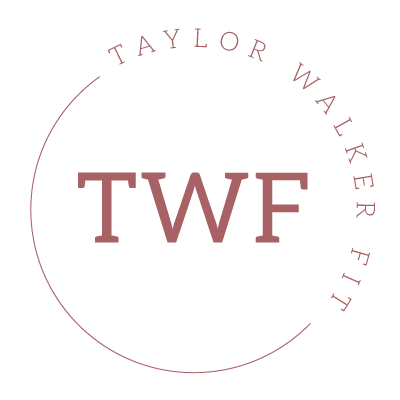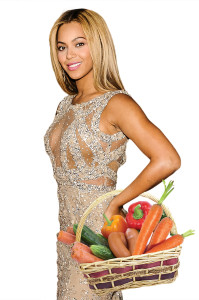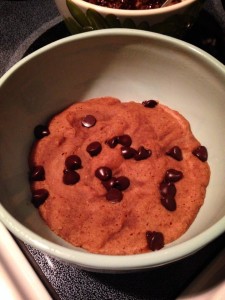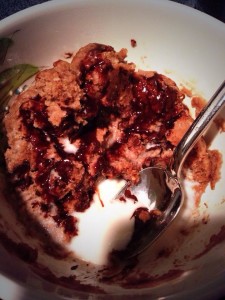In a culture where diets are trendy and our magazines are flooded with weight loss success stories, there always seems to be a different “lose weight get healthy” craze at any given moment. While a lot of popular diets & fads are built upon true health benefits and research, it seems that many people these days are trying them just for the “it” factor. I never depreciate the value of broadening one’s horizons especially when it comes to nutrition information. If Beyoncé is the only reason you tried veganism and it made you feel the best you’ve ever felt then more power to you! I always tell my clients that while it doesn’t always matter why they want to try a new diet/lifestyle, it DOES matter that they have as much knowledge about it as possible before starting up. Extreme diets and lifestyle changes (and even less extreme ones, too) are sometimes void of important vitamins and minerals crucial to your body. Before you start anything, educate yourself and take the time to realize what you might be missing once you start your journey.
For instance, we require iodine to remain healthy. In the case of vegans, they do not eat eggs, fish or cheese. All of those foods contain iodine and are the staples in which we get our daily percentage from. Therefore, vegans will need to supplement their diet with appropriate foods that have iodine. Yes, iodized salt contains iodine but for many of us cutting down on salt is part of our road to health. Thankfully, most vegans do not need to look much further than the big blue sea for their iodine fix. Most seaweed and sea vegetables contain enough iodine to satisfy our iodine requirements easily (and they are vegan!)
Internally, iodine is mainly stored in the thyroid where it is necessary for the formation of the thyroid hormones. Thyroid hormones are very important to the body as they control the our body’s temperature, cell production, nerve and muscle function, metabolism, protein synthesis and the health of hair, teeth and skin. If we do not get enough iodine it can cause many problems including lethargy, depression, tingling or numbness in hands and feet, weight gain, hair loss, dry skin and more unpleasant side effects!
Lately, the super popular catchphrase of my clients has been “gluten-free.” While some people must maintain a gluten free lifestyle (i.e. people with celiac disease) others simply choose not to eat it. First, let’s define gluten. Gluten is the protein found in wheat, barley, & rye.Close relatives of wheat such as spelt, triticale, kamut, farro, and einkorn, also contain gluten and must be avoided on a gluten-free diet. While oats don’t technically contain gluten, they’re almost always cross-contaminated with it. As a result, unless an oat product is labeled “gluten-free,” you should assume it has gluten in it.
When a person with celiac disease eats gluten, his or her immune system attacks the lining of the small intestine. This damage results in gas, bloating, diarrhea, constipation, headache, trouble concentrating, and fatigue. It can also lead to weight loss and malnutrition. While some people must avoid eating gluten, please remember that gluten is not a natural “toxin” to everyone. Some people, even though they test negative for celiac disease, experience uncomfortable side effects after eating gluten. These people may alleviate those symptoms by eating a diet that has less gluten in it or a diet that is gluten-free all together.
For most people, gluten is just one of many proteins from food that we eat in a typical American diet. Gluten is neither harmful nor essential to good health. In other words, if you tolerate gluten and enjoy it, there’s no compelling reason to avoid it. If you don’t tolerate gluten or just prefer not to eat it, there’s no compelling reason for you to keep it in your diet. With that said, remember that just because a food is “gluten-free” it does not mean that it is more natural, healthful, or lower in calories.
If you do choose to follow a gluten-free diet, by necessity or choice, your best bet is to choose minimally-processed foods that are naturally gluten-free. Some examples of gluten-free whole grains are: gluten-free oats, brown or wild rice, millet, buckwheat, and quinoa. They are nutritious and high-fiber, too. Beans, chickpeas, lentils, and the flours made from them are delicious options for both eating alone or in recipes while observing a gluten-free lifestyle. Lastly, I wouldn’t be a registered dietitian if I didn’t remind you to eat lots of fruits and vegetables regardless of what diet you decide on! Eating enough fruits and vegetables will guarantee that you get all of the essential vitamins, minerals, and fiber that you need to maintain a strong and healthy lifestyle.
Just in case you wanted to know, champagne is both vegan AND gluten free. You’re welcome.
Peace, Love & Carbs
Nicole
VEGAN & GLUTEN FREE CAKE IN A BOWL
Sometimes I like to eat cake. Okay, I always like to eat cake. Who ever said you can’t have your health and eat cake too has never tried my recipe. This is my 100 calorie “bowl cake.” The cake itself is 75 calories but because I added some toppings to it we’re at 100 calories.
5 heaping teaspoons of GF flour
4 heaping teaspoons of Almond Meal
3 TB of PB2
2/3 cup of almond milk
2 TB ah!laska GF choc syrup
1 tsp baking powder
10-12 enjoy life chocolate chips
Grease 2 bowls with oil of choice (I use canola oil spray) split the batter in half and sprinkle with the chocolate chips! Then microwave for 1 minute and 40 seconds. Top with 1/4 cup of almond milk and a drizzle of ah!laska choc syrup!




